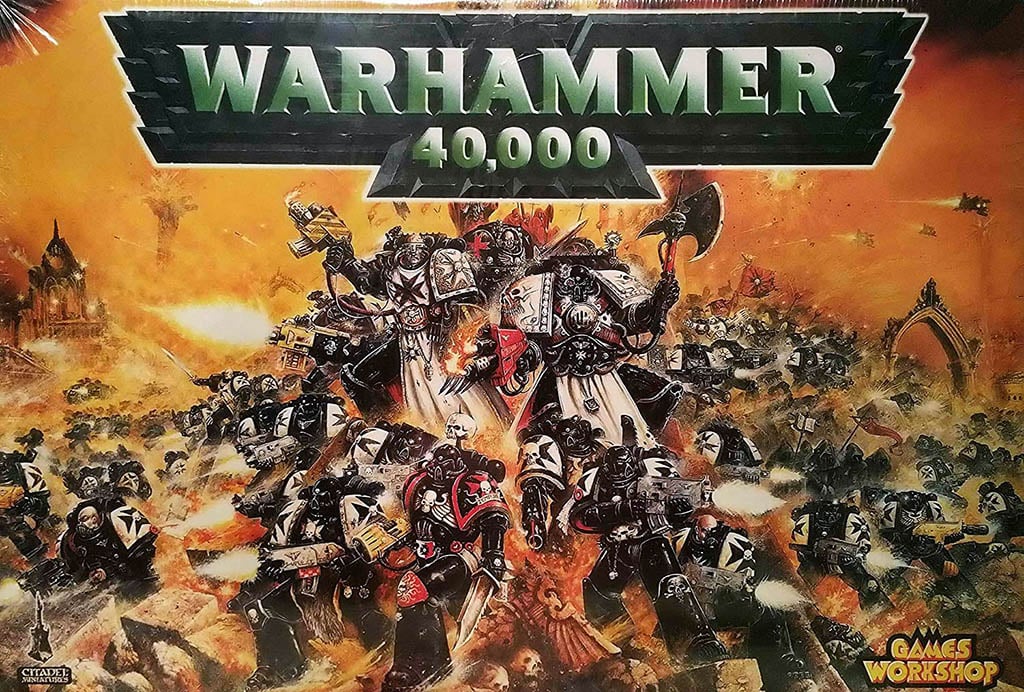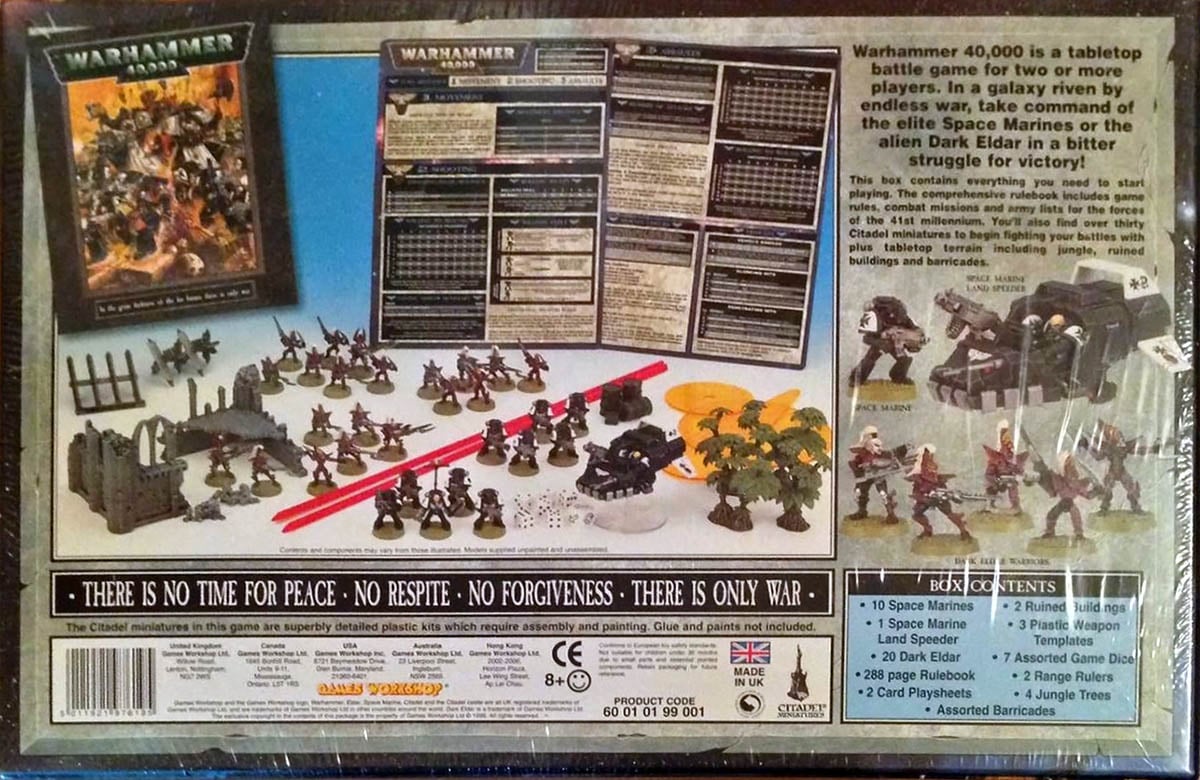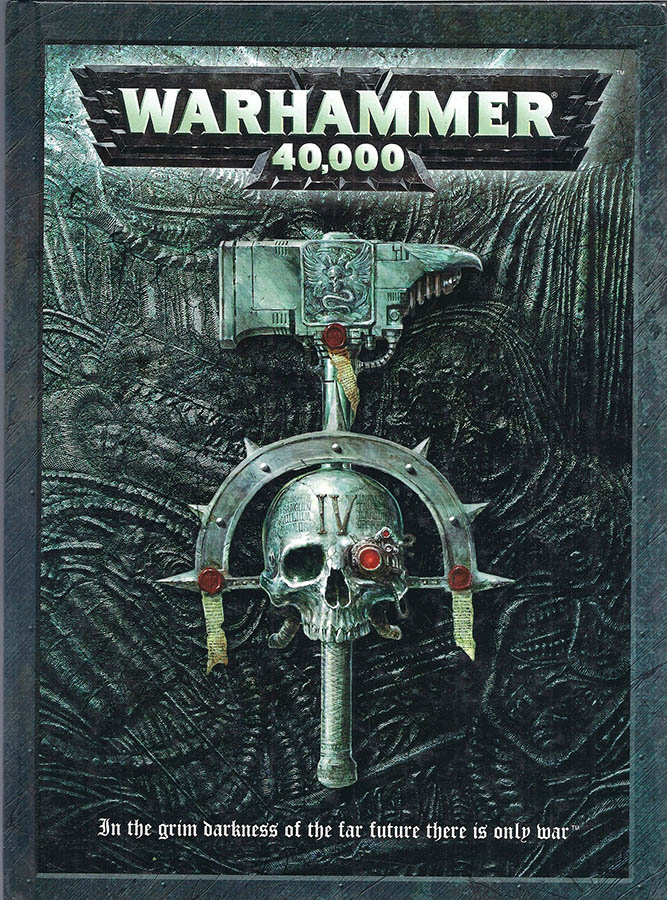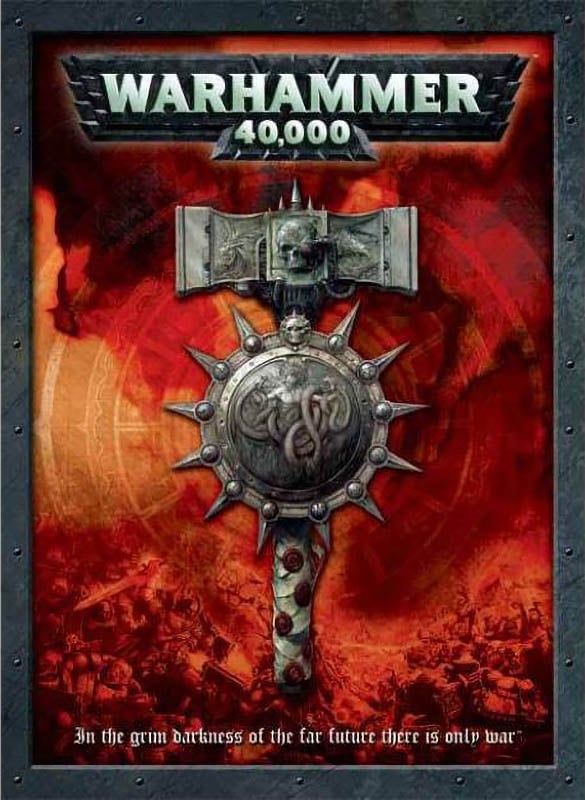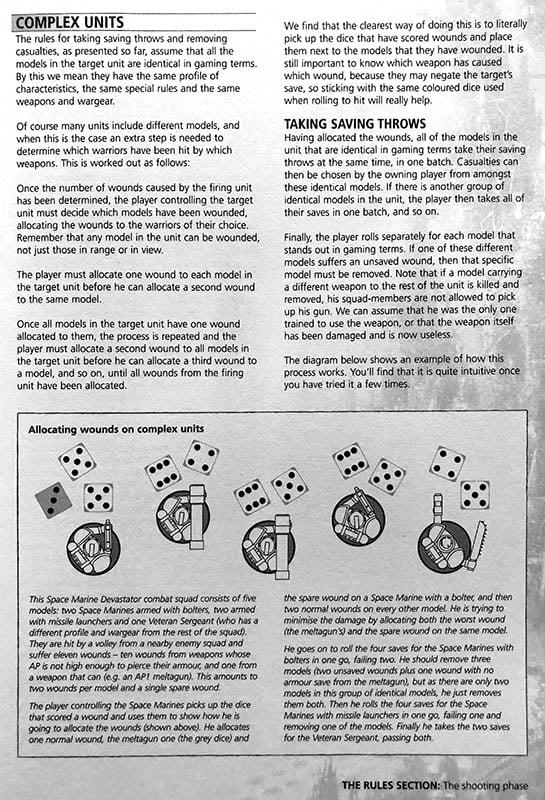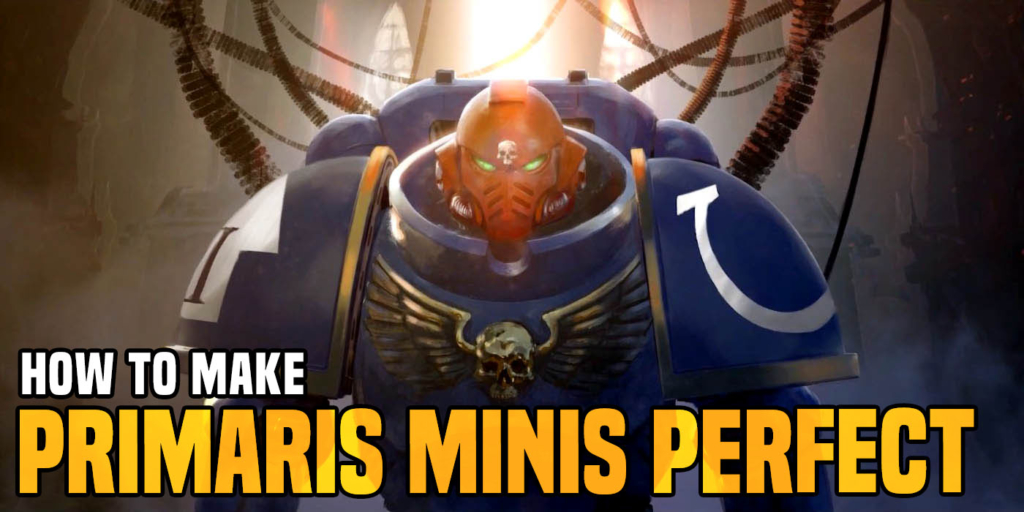Warhammer 40K: A History of Editions – 3rd, 4th & 5th Edition
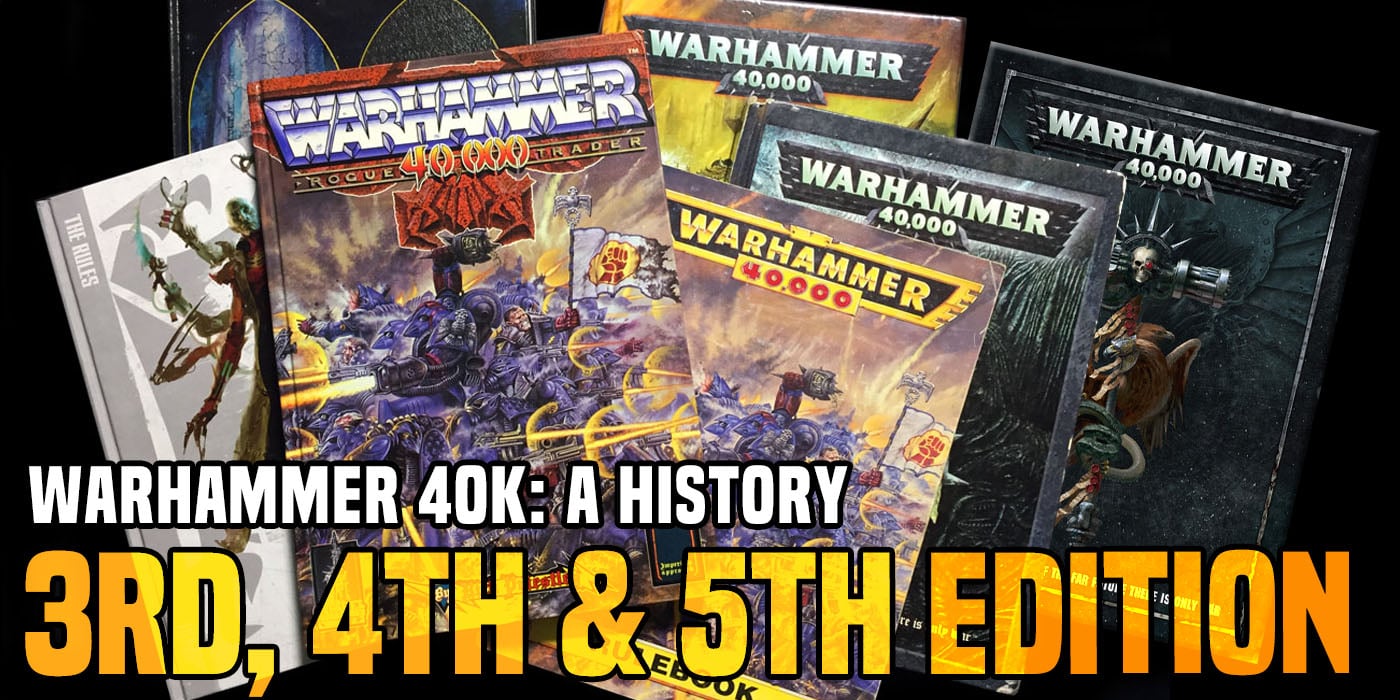

Come Grimdark enthusiasts as we cover the history and review of every edition of 40k. Today we look at 3rd, 4th & 5th Editions.
A guest series by Karru
Last time I talked about Rogue Trader and 2nd edition 40k, how they were, and what remains of them in this day and age. I can imagine that many of the younger readers or hobbyists found some of the content in it strange as both editions were wildly different from what many of you are used to. This time around, you will most likely start to feel quite a bit of familiarity as we move on to one of the historical moments in 40k that might remind people of another rather similar event.
3rd Edition (1998 – 2004)
The transition from 2nd edition to 3rd edition is best summarised to those that didn’t not experience it as similar to those what happened when 7th transitioned to 8th edition. The community was wildly split as some people started blaming GW for being corporate and finance focussed while the other side was ecstatic that they finally had an edition that didn’t take a PhD to learn how to play. Do any of those arguments ring familiar 2 decades later? Indeed, 3rd edition’s transition was massive. It invalidated the old 2nd edition books, meaning you had to buy everything again, the main rulebook contained an “Index” of its own where everyone had their own rules and points as well as profiles and in general a huge amount of streamlining was done, and the scale was increased. Again, sound familiar?
Dark Becomes Grim Dark
It wasn’t only the rules that were changed, or the scale that was increased, the general tone and focus of the 40k shifted during this period. Gone were the days of Limos driving around in a battlefield and neon coloured Gangsters fighting goofy looking Orks, now it was all grim, muddy and dark. 3rd edition shifted the focus towards the Imperium as well as the overall dark tones of the setting. The big change and the most memorable however to those that experienced this edition will always be the streamlining. The amount of rules in the game were greatly reduced, the D6 became the only dice you needed as opposed to what 2ndedition and Rogue Trader demanded which was multiple different dice, such as D4 and D8 to determine various effects. It was now all done with the humble D6. Movement was standardised, Infantry moves 6”, Jump Infantry 12” and so on, Shooting didn’t have modifiers in it anymore, Cover Saves were now a thing instead, Instant Death was introduced and Vehicles were now shrunk down to 2 Charts.
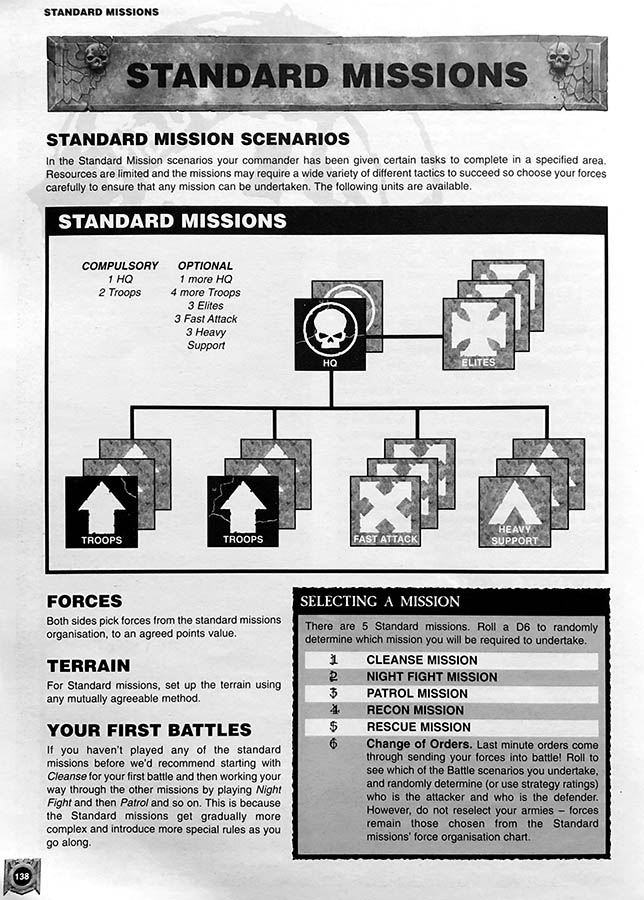 Where army building charts all began…
Where army building charts all began…
The Start of Something New
3rd edition became the basis for all future editions up until 6th edition when a shift happened again, and this was a good thing. Both RT and 2nd edition kept shifting the tone and game itself around, now there was stability, the next edition simply tweaked the past edition. The massive streamlining meant that the game was now much more accessible to everyone, especially the younger audiences, larger forces meant that people were now able to field forces they could never field in the past without having to spend a weekend playing one game. Making an army was made easier with the introduction of Force Organisation Chart, or CAD, or Battalion Detachment depending on which one might be more familiar with.
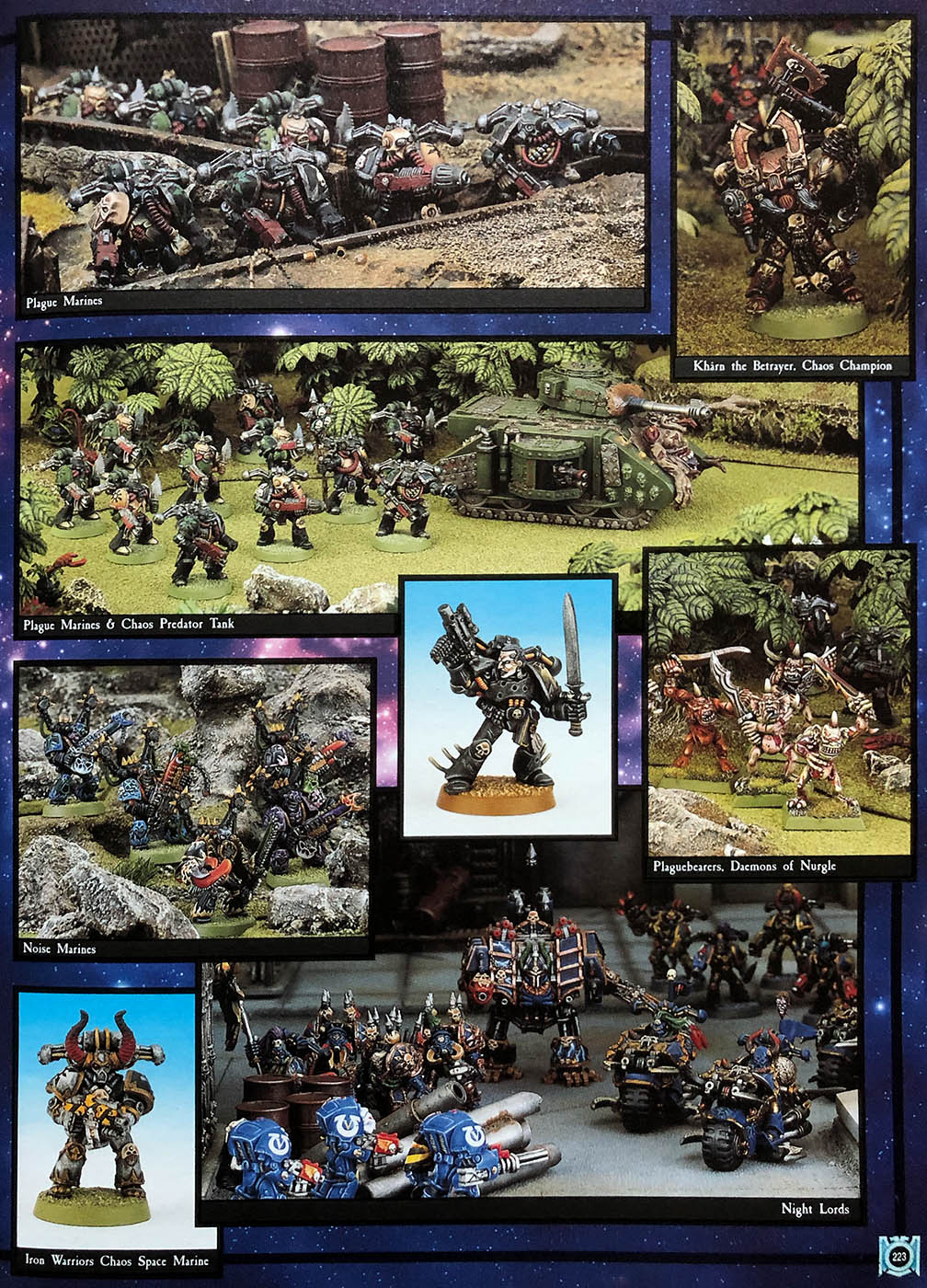 Everything is so grim… and dark.
Everything is so grim… and dark.
Not every changes was good however, bigger armies meant more models needed to be purchased. Also the shift in tone was not exactly welcomed by many, while finally settling down with the tone, the flat, serious and mainly Imperial focus made the lore feel somewhat dull. A great deal of the old humour was removed and the general focus on Imperium meant that many other factions were left to gather dust. Line of Sight also had its fair share of problems during this time, entire armies being blocked out with a Rhino turned side-ways as the LoS rules had some initial flaws build into them. Another issue that many dreaded during this period was Melee; more specifically, the possibility of Domino Effects. Melee units became a big thing during this period, as a single unit could technically go through your entire army in a turn through consolidation actions.
4th Edition (2004 – 2008)
As was mentioned, the main objective of later editions were to clarify and tweak problems with the original 3rd Edition ruleset. One of these changes was the changes to LoS and how it works. Units were split into 3 different categories, small, standard and large. This was introduced to counter the problem which was seen in 3rd with situations such as a unit of expendable mooks standing in front of a powerful unit and thus making it impossible to target the unit behind them as they couldn’t be seen from any angle. Target Priority was introduced to counter this problem. Basically you normally can only shoot at the closest target, if you pick a target that is not the closest, you rolled a Leadership Check to see if your unit fired at a target that wasn’t the closest.
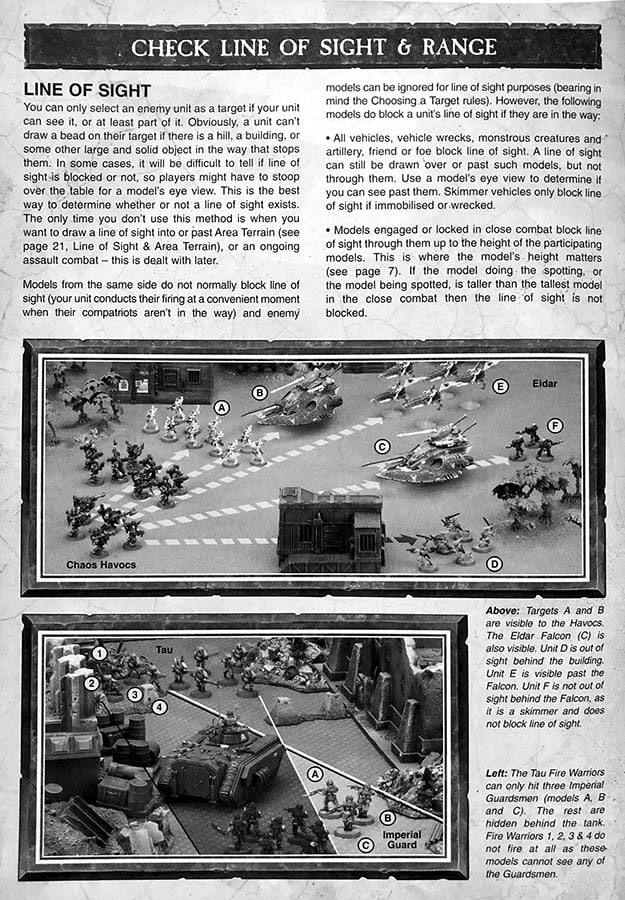 4th’s LoS rules saw the advent of “Fish of Fury” tactics.
4th’s LoS rules saw the advent of “Fish of Fury” tactics.
Following the Design
4th edition kept the flow that 40k had chosen to take with 3rd edition, focusing more on army combat than individuals, the changes were mainly meant to fix problems that had risen, but otherwise there were no design or mechanical changes in a way that invalidated anything in the Codices. A few rather unfamiliar “mechanics” were a thing as well during this era, including secret army lists! Yes, by default the players were not aware of their opponent’s army list, they’d agree on point totals, set up their lists but not “share” the lists as the logic was that it would enhance the experience since you as a commander wouldn’t know which Rhino held what.
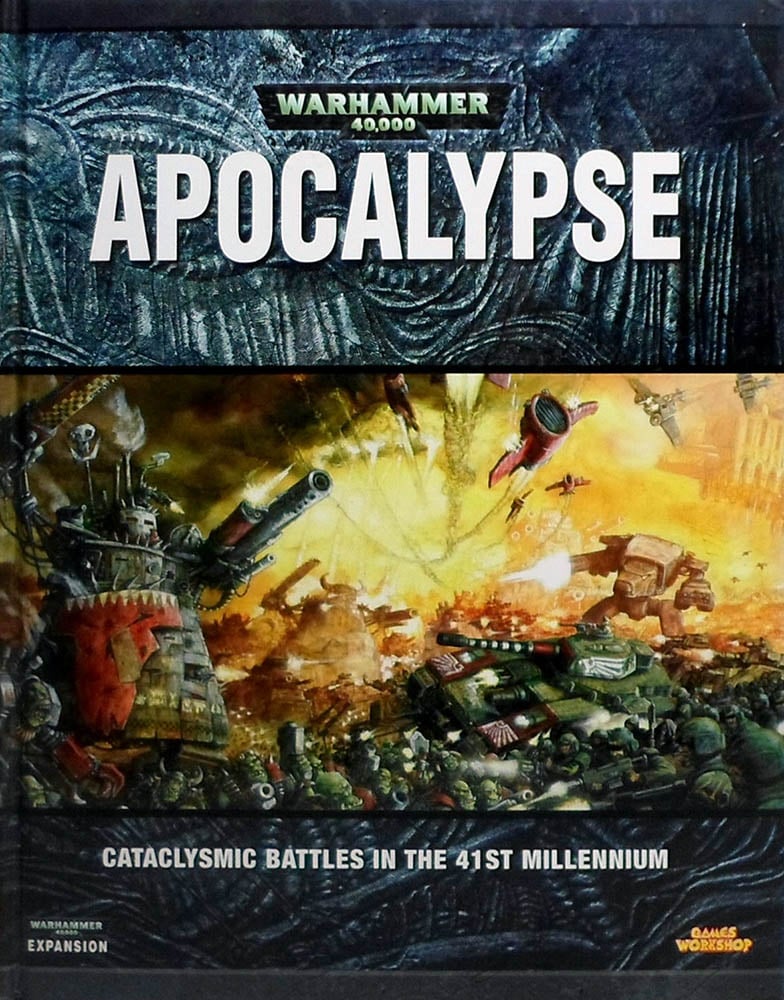 Apocalypse formalized “Mega-battles” in 4th Edition.
Apocalypse formalized “Mega-battles” in 4th Edition.
From Hidden to Rending
When discussing LoS rules through the years, usually it is 4th edition that is used as an example. The abstract LoS expanded to terrain, Area Terrain such as forests could only be seen 6” into, meaning that a forest did completely block LoS behind it. There was also many special missions included with the rulebook, things that these days can be found in expansion books. 4th edition also saw the introduction of two major expansions, Cities of Death and Apocalypse, which offered a large selection of alternative options for everyone.
 Your best (rending) friend in 4th Edition.
Your best (rending) friend in 4th Edition.
With the good comes the bad, one of the more memorable moments of this time was the way Rending worked. Rending was considered to be a tad too powerful as a single 6 to HIT meant that the unit automatically scored a wound and it ignored any Armour Save they might have. Be it the Space Marine Assault Cannon or Genestealers with Rending Claws, Rending caused just a tad too much damage for what it should have.
5th Edition (2008 – 2012)
Following the trend, the game was made to be a bit more optimised with the reduction of extra rules, such as Target Priority, and the introduction of True Line of Sight, rending was changed to be less effective and consolidation was changed so you couldn’t get to another combat. Overall, 5th edition had reached a point where the game had seemed to be done with core rules changes as the changes from 4th to 5th were much smaller than those from 3rd to 4th.
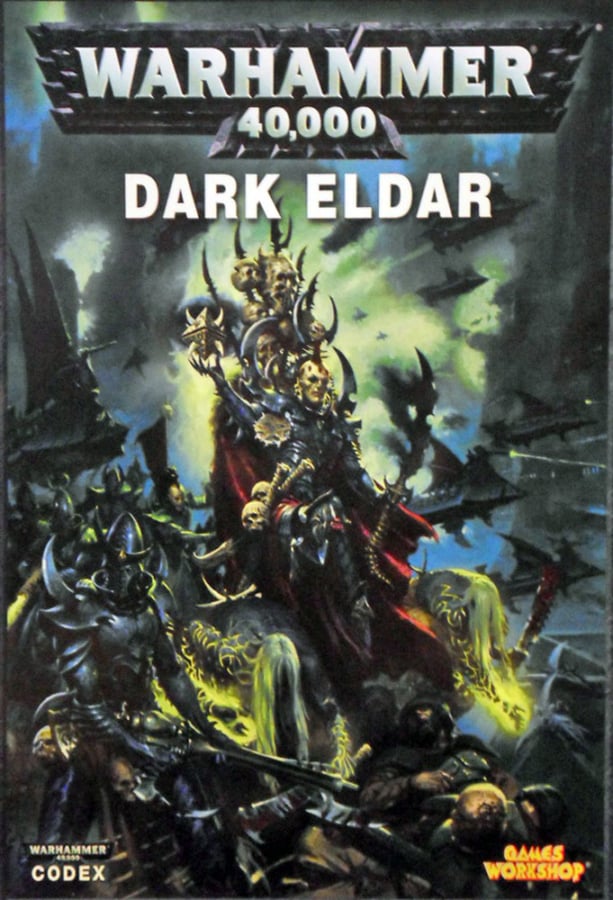 Dark Eldar returned with an all new codex in 5th.
Dark Eldar returned with an all new codex in 5th.
Streamline and Optimise
It is rather obvious that since the release of 3rd that GW had single goal in mind with the rulebooks: optimize and streamline the game so it is more welcoming to the general public. 5th edition kept up with this trend well by not really adding new rules and instead saw many removed. Back in 3rd and 4th edition, armies had faction rules for some armies, similar though more open than those in 8th edition. On top of that, Codices had Armoury sections which contained a great deal of wargear options for characters and unit leaders. These were removed during 5th edition, instead they were being replaced with a selection under the character in the army list section, now with the reduction of many clutter items that were sometimes simply given to the character by default.
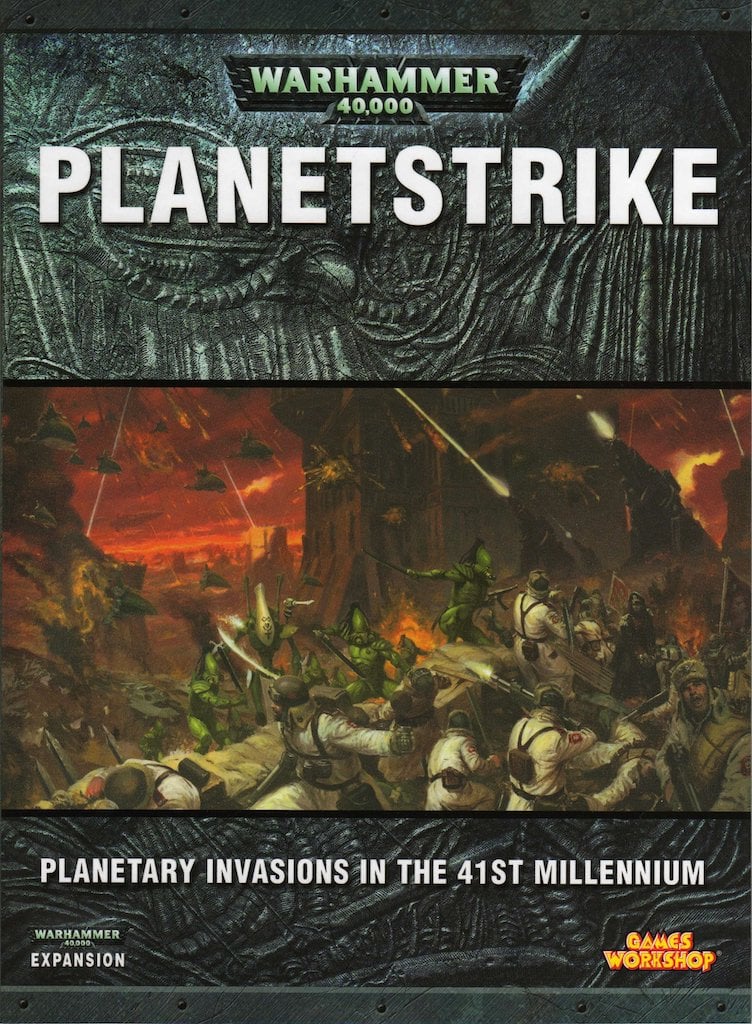 GW continued to add alternative playstyles such as Planetstrike in 5th ed.
GW continued to add alternative playstyles such as Planetstrike in 5th ed.
The Design Shifts
5th edition had reached the pinnacle of core rules for the most part. It had achieved a good balance between Shooting and Melee by giving neither an obvious advantage, all the while releasing much bigger and meatier Codices than what armies were getting in 3rd or 4th. Many armies got a whole new load of mechanics, such as the Dark Eldar Power From Pain and Imperial Guard Orders, so overall the game was heading into a good direction.
As with all things, nothing is perfect. While 40k was never a stranger to power creep, some armies were simply getting uneven treatment, amongst these was of course armies that didn’t get updates during 5th, such as Orks, Eldar, Chaos and Tau and were still stuck with their 4th edition books. On top of this there were armies such as Tyranids that lost a great deal of their effectiveness due to the loss of immunity to Instant Death through Synapse and the loss of Assault Grenades. Meanwhile, the dreaded Grey Knight and Necron Codices were released towards the end of the edition. Finally the most notorious design issue of 5th was Wound Allocation. Wound allocation, you take a wound and you assign it to whoever you wish in the unit. To make it short, “unique” models in the unit could be given a wound and all wounds were assigned at once. This meant that a unit of 10 Nobz for example had in most cases 10 individual models before characters to assign wounds to, however unlike in 8th, you didn’t have to assign the wound to a model that was already wounded, this means that a unit of Nobz had to take 11 wounds before the first model went down if the unit was made correctly.
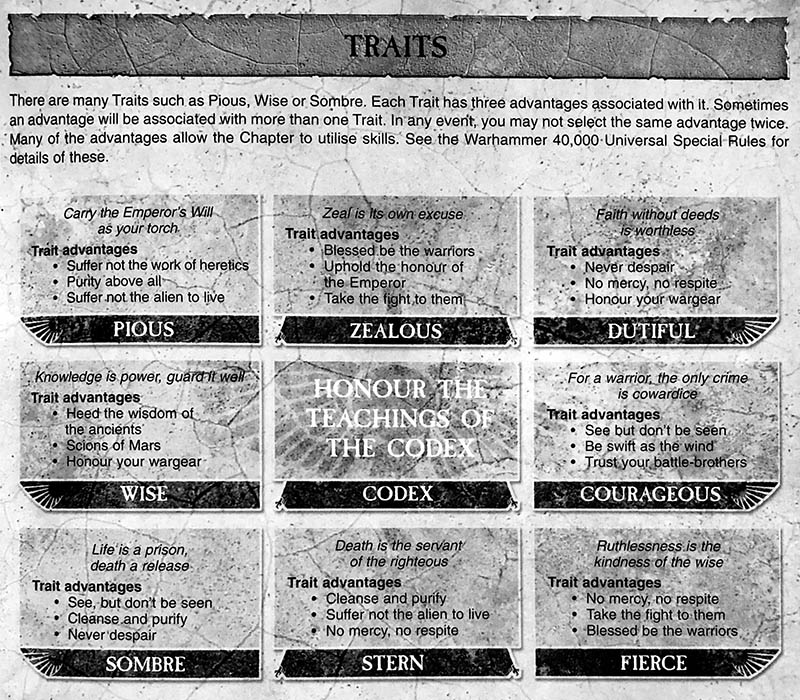 A foundation that 8th Edition would build upon.
A foundation that 8th Edition would build upon.
Game Changes but Much Remains
A great deal of rules have remained all the way to modern day. Most notable returning rules were Legion and Chapter rules, especially the “Make Your Own Chapter Rules” from 4th edition to the latest 8th edition Space Marine Codex. The Force Organisation Chart, while seeing modifications over the years, has remained with us and is now called the Battalion Detachment. Many of the old expansions have seen resurrection in Chapter Approved, such as Planetstrike and Spearhead.
Let us know how you feel about the editions as a whole in the comments.

